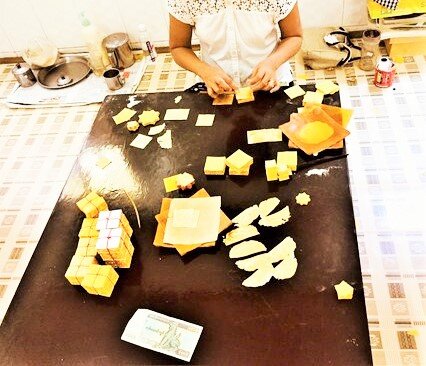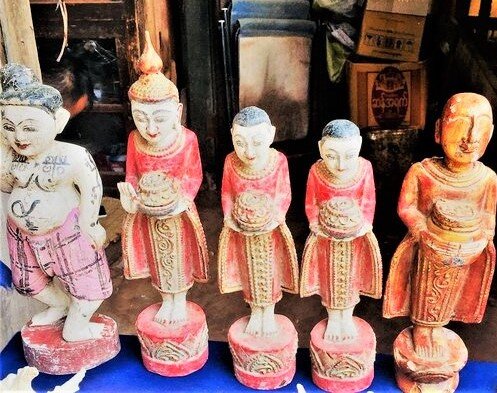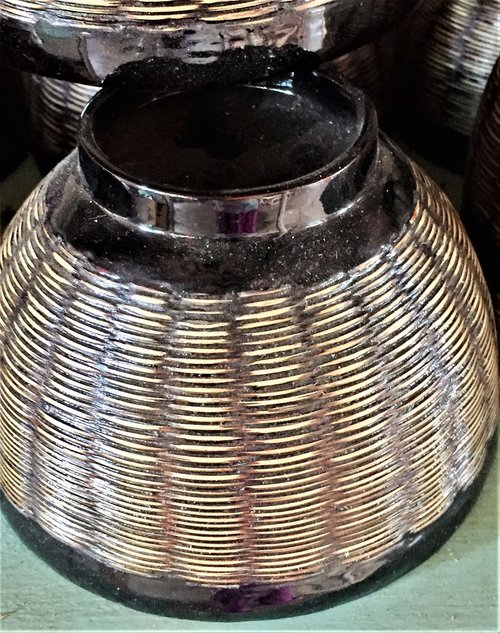vaga #3/22 Craft “b”
Part XXII
ARTISAN : in spanish “artesano” = arte-sano: sano=healty
PRECISE AND WISE WORDS : HealtHy art
A necessary explanation to understand the chapters that I will dedicate to crafts and my deep interest beyond seeing the finished product, is to be able to see the execution and in particular the textiles, because I know the craft closely. In these encounters with them, I have realised that language is not a barrier, it is enough that they allow me to sit in front of a loom, ask questions and try to understand the techniques of their weaving, investigate the dyeing thus making our connection clear. Language and tangled yarns, create a mutual empathy and on my part admiration that I will let them know. I am passionate about seeing them work, because these are centuries old handcrafts that over time have achieved a high refinement and mastery. I am interested in their sales methods and the subsistence of the artisans (a topic that I will elaborate on later) and this applies to any part of the world. And the explanation is that I value all work done by hand, I have worked with my hands since I was 14 years old, in textile crafts, and then I moved on to textile art. In short, I started as an artisan to finish as a sculptor where my past is reflected through the fibres.
The craft of gold work. They produce 24-carat gold sheets, I had never seen anything like this, I did not even know of its existence. This workshop is in the very centre of Mandalay city. They have no security against theft, none, there simply is no robbery and they are proud of it. !!!! what a wonder !!!! those who buy these plates use it to put it on the images of Buddha, other deities or pagoda domes. It is bought on a regular basis by Burmese people.
The below photo that I reproduced from the video is his routine
This workshop where the craft is carried out and sold to the public is about 30 square meters. In the realisation of gold sheets, first the refined gold is bought in small blocks, it is the thickness and length of a finger. The little bar is pounded and pounded with a special hammer. A piece of 10 by 10 centimetres takes 8 hours to make, that is, one sheet per day. The physical requirement is extreme, under 40 degrees of heat, temperatures that I have repeated insistently, because it is oppressive, and the people's lives adjust to the climate, which enables them to cope, and they do not seem to suffer. I only saw boys between 16 and 26 approximately doing the hard work, there were about 4 hammering zones,
The following video cannot be rotated, the YouTube instructions changed, and it will take me time to understand, but I can't wait, everything is delayed. Those who are encouraged should see it because it gives the atmosphere of such a craft and its precarious conditions, the noise of the hammering is the relevant thing. I'll get better with technology, I promise
The gold to be crushed is protected by a very fine ochre-coloured paper that has turned yellow. The bark of the tree, which, if I remember correctly is eucalyptus, is put in a ceramic pot only. It soaks for two years, after making a paste, it dries, and I don't know how they end up with that extremely fine paper. The function of this paper that is put on both sides of the sheet, prevents it from it adhering to the gold and protects it from being crushed, and gold is also sold with these sheets of paper. They are cut according to your size and design. I use the word very fine on several occasions because I can't find another one that describes its thinness.
In another area, only women work, and they are in a room with windows facing the shop, and they are closed, so that the very fine sheets are not blown away. In the following video you can see the workers trying to handle the delicate sheets. Really this craft surpasses many that I have seen, due to its complexity and the many early stages to reach the final product; to extract the gold, refine it, crush it, prepare the paper for two years, and then to prepare it to be sold.
The following video shows that thin piece of gold and what it costs to put it in its place ...
there are artisans who repeat designs over and over again apparently without much new creativity and the vast majority is true. However, it does not take away a single merit from the craft and expertise. There are other artisans who are evolving in designs on their material. And others who are artists of the materials and the craft. Artists are artisans, knowing and learning to handle a technique of a material that is the first stage, for example there are sculptors who have to know the craft either wood or stone, to later create their own creation. This is a family job and from a very young age they have been watching, then assisting their parents who generally work at home. And that's how most artisans are born and often by the age of 12 years. They are artisans themselves.
I go on to tell of a textile workshop I visited on the outskirts of Mandalay. Fatty took me because of my interest in crafts. I have never seen anything like this, the realisation of fabrics was beyond what is imaginable due to the complexity of their craft. Never seen by me before, and I would assure you that I will never see anything like this again. The fabrics and their designs belong to their culture and are not attractive to buyers as a product for tourists Apparently even the manufacture in semi-industrial factories of fabrics in this country are not protagonists, although there are massive products used for daily living and for any social, religious event, fabrics made in artisan workshops are used for this. I saw many workshops and work done in their homes in Myanmar and I will not show any other because after this the others look very basic in complexity in their techniques and designs. Of course there are highlights and I have counted them as those of women with a metal collar or the use of unique lotus fibres in the world. But nothing like or close to this workshop. The photos speak for themselves and I think that even for those who are not so interested in handicrafts. I think they will be worthy of recognition for their work.
It is only young women who produce these, and some older ones who are teaching the craft. There are two per loom and three when the instructor is there, they work for 3 weeks for 12 hours to get a skirt. Some girls of about 14 years old were constantly loading the threads in their navetas (artefact where the thread is put to be passed in the warp) and they will be the next weavers. I did not witness the loading of the loom, that is, when the vertical threads are placed, it must be a titanic task and a lot of knowledge is needed. I saw one measly fan in the roof, everybody sweats big time.
the complexity of the execution, in addition to the complicated work of so many threads and colours. The design to follow is only in the drawing, there is no more, each line is not specified, so they have to check each pass of the thread if it is correct. To my greatest amazement it was woven on the wrong side, you cannot see what it is done, therefore mirrors are used that are placed under the fabric to confirm its stitch. That was the height of my impression. The photos I took from the video because they were appropriate to show the act of using the mirror, impressive.
These fabrics are to make lengthy sarongs (men's skirts) and are woven by men, they are 100% silk, it was lunchtime and I did not see them working, it is a very simple job compared to those of the women, they were all in the same workshop. Silk sarongs are only used by very rich people and these can only have 3 colours. You can see a silk warp ... !!! what finesse, !!! What eyes and hands to do that delicate job !!!
This workshop is famous because it has dressed presidents and great figures of the republic, as well as been given as state gifts to other countries. It has a list of the pieces that have been given as gifts and the characters that have ordered the weaves. The photo above was on a wall, I do not know who they are, but they were important, they are dressed as a bridal couple. All in silk.
here I try to show some crafts from the Mandalay area.
Crafts are the tradition, expression and way of life of a culture, it is the representation of their environment, or they are objects necessary for their lives, such as bowls, fabrics, necklaces, clothes, objects for daily or ceremonial use, images of their deities. That is why I am fascinated by Asia, for its ancient tradition. I come from a country with 500 years of history and essentially of European migration. Far from having these wonders of ancient cultures, that is, we are talking of about four to five thousand years.
There are certain crafts that seem to be the same throughout Asia, be it techniques or designs, but in each country it has been demarcated with its own identity, some are more obvious than others and in each region it is specialising or adapting more in one craft than another, With the passage of time these crafts are differentiated until getting to the objects that physically and exclusively belong to one region. There are also those that are absolutely particular to an area, without equal or located only in a small town over centuries. It also has to do with the surrounding materials each region has access to, for example silk, indigo dye, they do not occur everywhere. Those that are assimilated between countries simply by trade between these peoples for centuries. I have had the surprising experience, to have seen the same techniques used. Embroidery, looms and the use of exactly the same clothes between Maya highland in Guatemala and the H’omg ethnics from the North of Vietnam over the border in China. It is impossible that there is trade between them. In another case, I have seen the same material, design, colour, technique as the rags made by (Mipuches) , a small ethnic group in Chile, in a town in the middle of Vietnam. I will tell you about this at another opportunity, I am hugely intrigued by this, and I need to think about it.
I finish with a photo, I saw it a few days ago in Thailand, i realised that I’m not the only one who hallucinates with the shuttle, it was for sale as it is.






















































